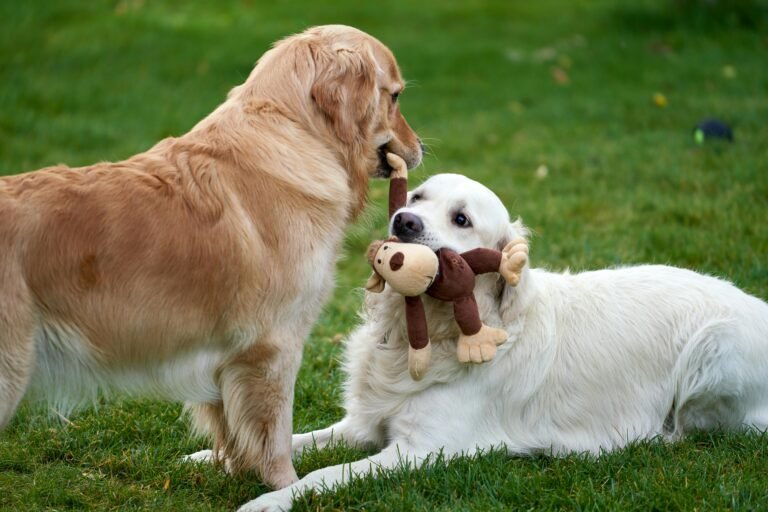Introduction
Every dog owner has experienced that heart-melting moment when their pup curls up beside them after a tough day — or that jealous glare when attention goes elsewhere. But are these truly signs of empathy and emotion, or just instinctive reactions? Modern science suggests dogs are far more emotionally intelligent than we once thought. They not only read our feelings but often share them, showing empathy and even jealousy in remarkably human-like ways.
1. The Science of Canine Emotion
For years, scientists debated whether dogs truly experience complex emotions or simply react to cues. Today, brain-imaging studies have changed that view. Dogs have an amygdala and prefrontal cortex — brain regions responsible for emotion and decision-making, just like humans. Functional MRI scans show that dogs’ brains light up in similar ways when exposed to familiar scents or emotional tones of voice.
In short: Dogs don’t fake feelings — they feel them.
2. What Is Empathy in Dogs?
Empathy means sensing another’s emotions and responding appropriately. In dogs, it often shows through subtle physical and behavioral cues:
- Approaching or nuzzling a sad owner
- Matching emotional tone — calm when you’re calm, restless when you’re anxious
- Yawning or whimpering when they see another dog distressed (a sign of emotional contagion)
Studies from the University of London found that dogs approached and comforted crying humans — even strangers — more often than those talking or humming. That’s empathy in action, not conditioning.
3. How Dogs Sense Human Emotions
Dogs are masters at reading humans — often better than we read ourselves. They interpret emotions through a combination of scent, body language, and vocal tone.
- Scent: Dogs detect hormonal changes, such as cortisol (stress) or adrenaline, allowing them to “smell” fear or excitement.
- Voice: The tone, not the words, guides their emotional interpretation — soft tones soothe, harsh tones alarm.
- Facial cues: Dogs can distinguish happy versus angry human faces and adjust their behavior accordingly.
Pro Tip: Maintaining calm, confident energy helps your dog feel secure and emotionally balanced — they mirror your state of mind.
4. Emotional Contagion: The First Layer of Empathy
One reason dogs are such intuitive companions is emotional contagion — they literally “catch” our feelings. If you’re stressed, your dog’s heart rate may rise; if you’re relaxed, they’ll often lie down and sigh contentedly.
- Research shows dogs synchronize their heart rate and stress hormones with their owners.
- They adapt their posture and breathing patterns to match human mood.
- This mirroring happens subconsciously — an ancient social survival mechanism.
It’s the canine version of empathy’s foundation: feeling what another feels, without necessarily understanding why.
5. Compassionate Behavior: True Empathy at Work
Beyond mirroring, dogs often take comforting action. When they see someone upset, they may lick tears, rest a paw, or bring a toy — all attempts to soothe distress. These gestures show a deeper level of empathy known as sympathetic concern.
Therapy and service dogs are trained to harness this natural empathy — detecting anxiety attacks, depression episodes, or even drops in blood sugar. But many family dogs do it instinctively.
6. The Green-Eyed Pup: Do Dogs Feel Jealousy?
If you’ve ever petted another dog and felt your own dog wedge themselves between you, you’ve seen jealousy firsthand. Scientists call this social rivalry — a primitive but emotional response rooted in attachment.
- Dogs are social pack animals; attention equals belonging.
- When attention shifts to another, they may feel excluded and act protectively.
- Jealous behaviors include nudging, whining, or inserting themselves physically between rivals.
Studies by the University of California, San Diego confirmed that dogs display jealous reactions even when owners interact with stuffed “fake dogs,” proving it’s emotional, not just resource-based.
Pro Tip: Balance affection equally between multiple pets, and reward calm confidence rather than clingy behavior.
7. Do Dogs Understand Fairness?
Another sign of emotional intelligence is fairness awareness. Experiments show dogs refuse commands if they see another dog rewarded while they’re ignored. This suggests dogs possess a basic sense of equity — a social glue that keeps packs cooperative.
In one famous study, dogs who stopped receiving treats during a shared task refused to continue once they noticed unequal treatment — clearly aware something wasn’t right!
8. The Bond Between Human and Dog: Built on Emotional Sync
What makes the human-dog bond so powerful is emotional attunement. Dogs and humans have co-evolved for over 30,000 years, learning to read each other’s feelings for survival and companionship. Eye-contact between dogs and owners even increases oxytocin — the “love hormone” — in both species, strengthening emotional attachment.
- When you smile, your dog’s oxytocin rises.
- When they gaze back, yours does too.
Pro Tip: Take moments each day for calm, eye-level connection. Gentle affection, quiet petting, or just sitting together builds emotional stability for both of you.
9. Managing Jealousy and Emotional Overload
While empathy is beautiful, excessive emotional absorption can cause anxiety. Dogs who constantly mirror stress may become restless, overprotective, or attention-seeking.
- Keep routines steady — predictability lowers anxiety.
- Use enrichment toys to redirect nervous energy.
- Practice calm departures and arrivals to prevent over-attachment.
- Reward relaxed behavior around other dogs or family members.
Pro Tip: A balanced, confident owner creates a balanced, confident dog. Your emotional tone sets the pack energy.
10. Recognizing Genuine Empathy From Your Dog
- 🐶 They approach when you’re upset — not for attention, but contact.
- 🐶 Their expression softens when you’re sad.
- 🐶 They respond faster to your distress than to strangers’ emotions.
- 🐶 They stay close until your tone and body language relax.
These aren’t coincidences — they’re the behaviors of a companion tuned into your emotional frequency.
Conclusion
Dogs may not write poetry or philosophize about love, but their empathy is real and powerful. They sense our emotions, mirror our moods, and sometimes even absorb our pain — proving that their bond with humans runs deeper than instinct. From comforting you on bad days to showing playful jealousy, dogs live through feeling. Understanding their emotional world not only strengthens your connection but reminds us why they’re truly our best friends — loyal, loving, and emotionally present in every heartbeat.



